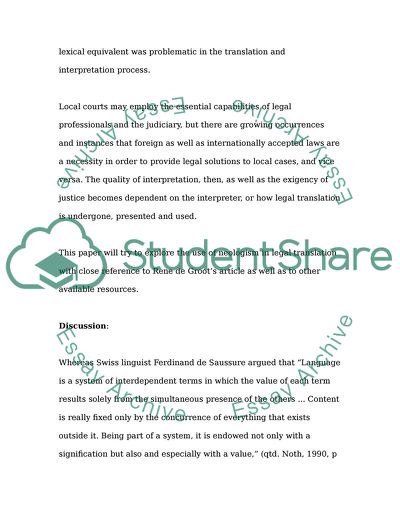Cite this document
(“Use of neologisms in legal translation Essay Example | Topics and Well Written Essays - 2000 words”, n.d.)
Retrieved from https://studentshare.org/education/1522989-use-of-neologisms-in-legal-translation
Retrieved from https://studentshare.org/education/1522989-use-of-neologisms-in-legal-translation
(Use of Neologisms in Legal Translation Essay Example | Topics and Well Written Essays - 2000 Words)
https://studentshare.org/education/1522989-use-of-neologisms-in-legal-translation.
https://studentshare.org/education/1522989-use-of-neologisms-in-legal-translation.
“Use of Neologisms in Legal Translation Essay Example | Topics and Well Written Essays - 2000 Words”, n.d. https://studentshare.org/education/1522989-use-of-neologisms-in-legal-translation.


